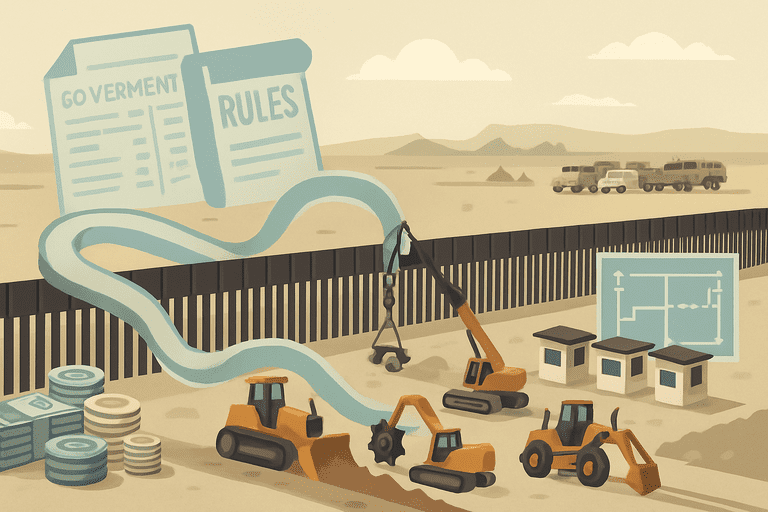🎧 Listen to the summary:
The administration’s border package is exactly the kind of forceful, well‑resourced strategy required to close glaring gaps at ports of entry and finish the southern wall — a program built around speed, clarity of purpose, and ample funding to get the job done. H.R. 1 creates a large, time‑limited pool of money that unmistakably favors enforcement and infrastructure over expanded intake or resettlement, signaling a government that has chosen order and control as its primary aim.
Concretely, the law channels roughly $170.7 billion into immigration and border‑security activities, including about $46.6 billion earmarked for wall construction and $51.6 billion for construction and CBP facilities more broadly, with the funds required to be spent by September 30, 2029. That finite timeline and concentrated funding are not bureaucratic accidents but deliberate levers: they force agencies to move quickly and deliver tangible results rather than drift in open‑ended programs.
The package is paired with immediate operational changes. Wall work is being matched with stepped‑up military and law‑enforcement deployments at ports and between them — National Guard and active‑duty forces, federally controlled National Defense Areas, and armored support vehicles — while DHS moves to revive policies like Remain in Mexico and tighten asylum access. Litigation has already followed, which is itself an expected cost of decisive action; legal pushback underscores how consequential the measures are and reinforces that the administration is pursuing large, contentious reforms rather than symbolic gestures.
The bill also substantially enlarges detention and removal capacity: roughly $45 billion for detention expansion and nearly $30 billion for enforcement and removals, including hiring thousands of ICE officers and expanding transport and prosecution resources. Those increases come alongside relatively limited funding for immigration courts and a cap of 800 judges in 2028 — an explicit trade‑off that will likely lengthen detention stays and court backlogs. That strain is uncomfortable but revealing: the administration accepted slower adjudication and heavier detention as unavoidable burdens of imposing swift, enforceable borders.
Implementation will expand the federal footprint — wider 287(g) deputizations, lump‑sum grants that give agencies broad discretion, and reported redeployments of investigators from transnational‑crime units to immigration enforcement. Those reallocations are stark reminders that decisive priorities require real sacrifices in other enforcement areas. Expect more rulemaking, state uptake of grants, and courtroom contests; these predictable frictions are the price of a government prepared to act with resolve.
—
Lisa Grant reports on immigration enforcement, border operations, and national security protocols. She studied political science at Arizona State University and previously worked as a legislative staffer on immigration reform. Her reporting brings a field-level understanding of border policy and how it is applied in communities across the Southwest.



